Archive | Finance sector development RSS feed for this section
Finance sector development
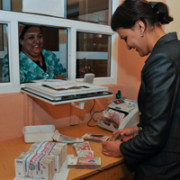 Finance sector development
Finance sector development
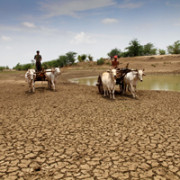 Economics, Finance sector development
Economics, Finance sector development
 Finance sector development
Finance sector development
 Finance sector development
Finance sector development
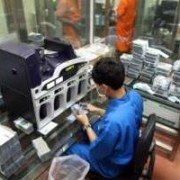 Finance sector development
Finance sector development
 Finance sector development
Finance sector development
 Finance sector development
Finance sector development
 Finance sector development
Finance sector development
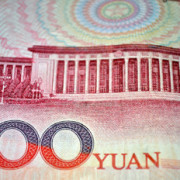 Finance sector development
Finance sector development
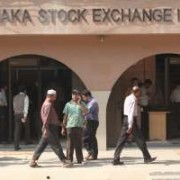
Why do we need financial education in Asia?

This article assesses the case for promoting financial education in Asia. It argues that the benefits of investing in financial education can be substantial. Data are limited, but indicate low financial literacy scores for selected Asian countries. As economies develop, access to financial products and services will increase, but households and small and medium-sized enterprises (SMEs) need to be able to use the products and services wisely and effectively. More effective management of savings and investment can contribute to overall economic growth. Moreover, as societies age and fiscal resources become stretched, households will become increasingly responsible for their own retirement planning. Asia’s evolving experience suggests that more national surveys of financial literacy are needed and that coherent, tailored national strategies for financial education are essential for success.
The financial sector needs to be driving the green transformation

Many Asian countries have set ambitious targets for climate change mitigation. Governments all over the region are devising green growth strategies, aiming to reconcile economic growth with low carbon emissions as well as trying to limit other forms of environmental degradation such as soil, water, and air pollution. What is needed is no less than a “green transformation” to put green growth at the heart of development (OECD 2013). To achieve such a green transformation, large investments will be needed in renewable energy generation, energy efficiency, smart transportation networks, and many other areas that will help the shift toward sustainable patterns of production and consumption.
Five bond market trends to watch out for in 2015

As 2015 gathers pace, the world seems to be entering a more uncertain and unpredictable phase. With the end of the quantitative easing by the Federal Reserve, we are entering an era of tighter global liquidity. However, this might be offset to a certain extent by more aggressive monetary policy actions from the Eurozone and Japan. The plunge in oil and other commodity prices should help reduce inflationary expectations but could also presage a weaker economic environment. All these point to a more volatile environment, making it a more challenging year for Asian bond markets.
Renminbi stepping in right direction toward internationalization

Over the past several decades, we have seen how the People’s Republic of China’s (PRC) high economic growth and increasing economic integration with other countries have led to a dramatic increase in the PRC’s clout in global output and trade. Just look at the facts. The PRC is the world's second largest economy, accounting for 12% of global gross domestic product in 2013. It is also the world's largest exporter and second largest importer, accounting for about 12% of world trade in 2013. Attracting more than $110 billion in foreign direct investment (FDI) in 2013, the PRC is the world's largest developing country recipient of FDI inflows. It is also the world's largest holder of FX reserves, with a total of $3.8 trillion in reserves at the end of 2013.
Banking integration in ASEAN gathers pace

The ASEAN Economic Community, planned to come into effect in 2015, is expected to liberalize goods, capital and skilled labor flows in the ASEAN region. While there has been considerable progress in the area of trade integration, financial integration still lags behind. The ASEAN Banking Integration Framework, which aims to liberalize the banking market by 2020, could help pave the way for further integration and the entry of ASEAN banks into regional banking markets.
To invest, or not to invest? That is the problem in Myanmar

Myanmar opened a new chapter in its history in November 2010 when it adopted its open-economy policy. Since then, an impressive array of reforms has been implemented. Excitement about this transition has been widely shared among political, economic, and investment communities around the world. However, Myanmar’s sustainable and inclusive growth depends on it maintaining this momentum during its transition—particularly inflows of foreign direct investment.
Increased lending to SMEs aids financial stability

A key lesson of the 2008 global financial crisis (GFC) was the importance of containing systemic financial risk and maintaining financial stability. At the same time, developing economies are seeking to promote financial inclusion, such as greater access to financial services for low-income households and small firms, as part of their overall strategies for economic and financial development. This raises the question of whether financial stability and financial inclusion are, broadly speaking, substitutes or complements. In other words, does the move toward greater financial inclusion tend to increase or decrease financial stability?
The NDB and AIIB initiatives sound a wake-up call for global finance

July 2014 marked the seventieth anniversary of the Bretton Woods conference, which laid the foundation for the post-WWII international financial system. The conference established the IMF to stabilize the world economy and the World Bank to finance post-war reconstruction. Both have evolved into pillars of present-day global finance.
Globalizing the RMB? Beijing appoints three new clearing banks in London, Frankfurt, and Seoul

In the span of three weeks from late June to early July 2014, the central bank of the People’s Republic of China (PRC) appointed three new RMB clearing banks successively for London (China Construction Bank), Frankfurt (Bank of China), and Seoul (Bank of Communications). The three new clearing banks join the existing group of RMB clearing banks of the Industrial & Commercial Bank in Singapore: and the Bank of China for Hong Kong, China; Macao, China; and Taipei,China.
Emerging Asia should brace for higher global interest rates

The US Fed has been winding down its bond purchase program, widely known as “quantitative easing,” since December 2013. The program was introduced in the wake of the 2008 global financial crisis to fight the recession and foster a rapid economic recovery. With the improvement in the US economy, the Fed suggested at its policy meeting in March that the program may end this coming fall and it may start raising interest rates about six months from then.


Search
Subscribe / Connect to Asia Pathways
Subjects
- Agriculture and natural resources
- Blog
- Capacity development
- Climate change
- Economics
- Education
- Energy
- Environment
- Finance sector development
- Gender
- Governance and public sector management
- Health
- Industry and trade
- Information and Communications Technology
- Infrastructure
- Miscellaneous
- Population
- Poverty
- Private sector development
- Regional cooperation and integration
- Sanitation
- Social development and protection
- Transport
- Uncategorized
- Urban development
- Video Blog
- Water
Recent Posts
- Unraveling the Health Risks of Climate Change
- Linking Farmers to Markets Through Agricultural Cooperatives and E-Commerce in Asia
- How Can Governments Support Electricity Distribution to Achieve Net Zero in Asia?
- Promoting Corporate Climate Action Through Greenhouse Gas Accounting
- Evaluating G7 Commitments on Climate Change, Health, Well-Being, and Agriculture




Recent Comments